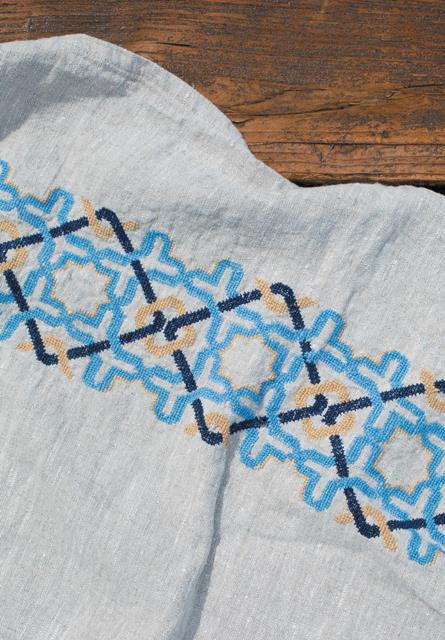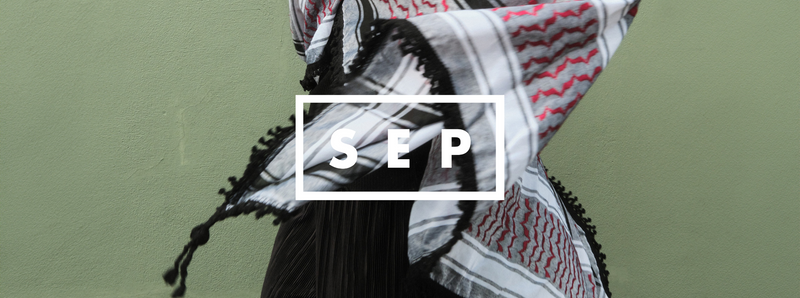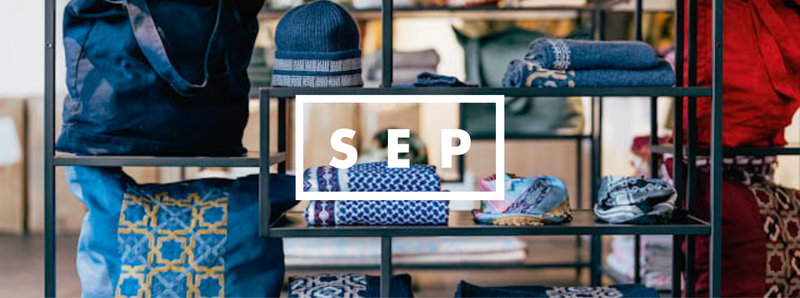Why are we obsessed with linen?
Posted on May 20 2016
Sometimes we get asked: why do you embroider on linen so often? isn't it a bit too rough on the skin?
We can never quite answer as extensively as we wish, so I thoght it would be a good idea to share with our readers some of the reasons why we think linen is the perfect ''magic'' fabric to match with our ''magic'' embroideries:Since the olden days linen has been seen to have curative properties (see our brief history of linen below); such belief has been corroborated by modern studies.

... What properties?

- linen is highly hygroscopic as it is capable to rapidly absorb and yield moisture. It evaporates water as quickly as the pond surface. It has been established that before giving a feeling of being wet, linen cloth can absorb as much as 20% of its dry weight. That explains why linen cloth always feels fresh and cool;
- linen possesses high air permeability and heat conductivity properties. Heat conductivity of linen is five times as high as that of wool and 19 times as that of silk. In hot weather those dressed in linen clothes are found to show the skin temperature 3°-4°C below that of their silk or cotton-wearing friends. According to some studies, a person wearing linen clothes perspires 1.5 times less than when dressed in cotton clothes and twice less than when dressed in viscose clothes. Meanwhile in cold weather linen is an ideal warmth-keeper;
- the more linen is washed the - the more linen is washed the softer and smoother it becomes;
- linen has a smooth mat surface and feels pleasant to the touch;
- linen has been used as underwear and bed linen for centuries and it was believed to reduce fatigue and lifts spirits;
- flax fabric acts as a filter, protecting the skin against chemical products, dust and other aggression; linen clothes help soothe several skin conditions - from common rash to chronic eczemas;
- linen reduces gamma radiation and protects the human organism against solar radiation. Flax fiber in contaminated soils does not appear to show traces of radiation;
- linen underwear possesses rare bacteriological properties. Resistant to fungus and bacteria, it is found to be an effective barrier to several diseases. According to medical studies conducted by Japanese researchers, bed sheets can prevent bedsores for bed-ridden patients;
- linen does not cause allergic reactions and is used to treat a number of allergic disorders;
- linen and inflammation: it may reduce fever by regulating air ventilation;
- linen cloth does not accumulate static electricity - even a small addition of flax fibers (up to 10%) to a cloth is enough to eliminate the static electricity effect;
- linen is renowned for its durability and long life. The tensile strength of linen thread is twice as high as that of cotton and three times that of wool;
- silica present in the flax fiber protects linen against rotting - the mummies of Egyptian Pharaohs preserved to the present day are wrapped in the finest linen cloth;
- linen rejects dirt and maintains a flat surface throughout the years;
- linen is easily washed in hot water and dried in the sun, and it may be hot-ironed;
- flax cell is highly compatible with the human cell and triggers a positive effect on the human organism. The human cell is capable to completely dissolve the flax cell. That is why flax fabric along with hemp and cotton, used to be the basis of surgical sutures.
A Little History of Flax and Linen:
The earliest evidence of humans using wild flax as a textile comes from the present day Republic of Georgia, where spun, dyed, and knotted wild flax fibers were found in Dzudzuana Cave and dated to the Upper Paleolithic, 30,000 years ago. Flax was first domesticated in the Fertile Crescent region. There is evidence of a domesticated oil-seed flax with increased seed size by 9,000 years ago from Tell Ramad in Syria. Use of the crop steadily spread, reaching places as far as Switzerland and Germany by 5,000 years ago (3,000 BCE). In China and India domesticated flax was cultivated by at least 5,000 years ago (3,000 BCE).
Flax was extensively cultivated in ancient Egypt, where the temple walls had paintings of flowering flax and mummies were entombed in linen. Egyptian priests only wore linen, as flax was considered a symbol of purity. Phoenicians traded Egyptian linen throughout the Mediterranean, and the Romans used it for their sails. As the Roman Empire declined, so did flax production, but Charlemagne revived the crop in the 8th century CE with laws designed to publicize the hygiene of linen textiles and the health of linseed oil. Eventually, Flanders became the major center of the linen industry in the European Middle Ages. In North America, flax was introduced by the colonists and it flourished there. But by the early 20th century cheap cotton and rising farm wages had caused production of flax to become concentrated in northern Russia, which came to provide 90% of the world's output.
Some of the above might be why our customers who purchased linen beach towels last year, came back for more ahead of this summer and bought more as gifts!
















